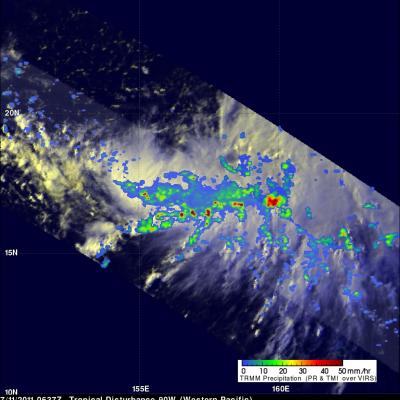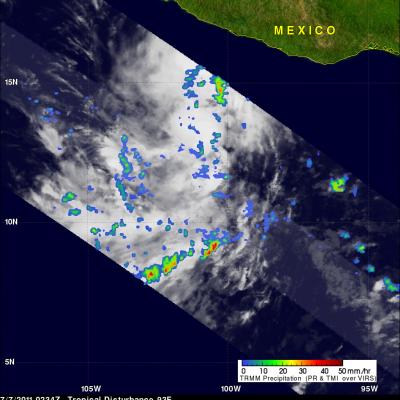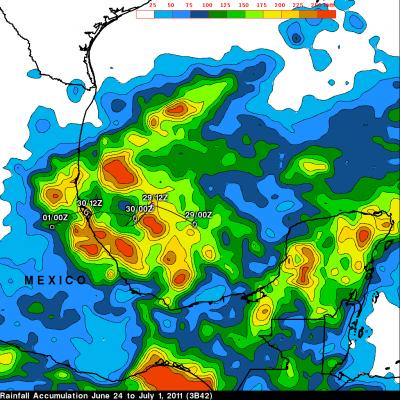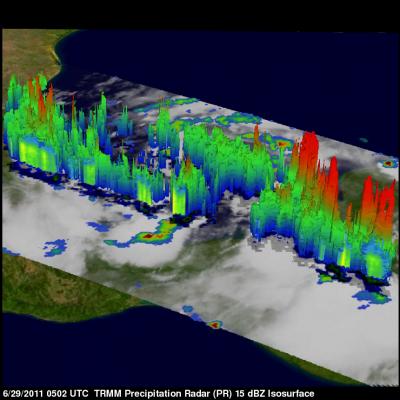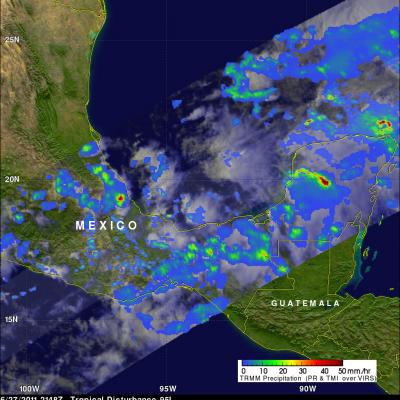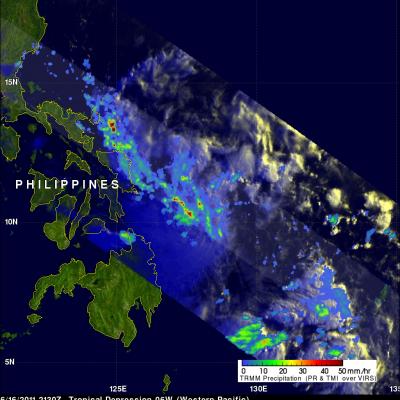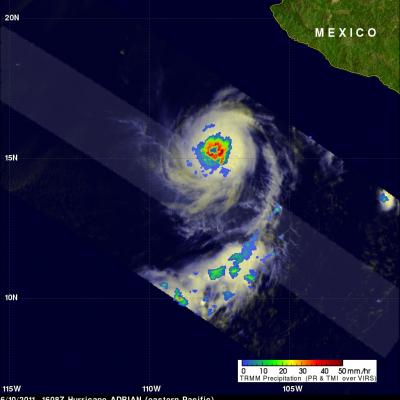TRMM Sees Developing Western Pacific Tropical Cyclone
The TRMM satellite flew over newly designated tropical depression 08W in the western Pacific Ocean on 11 July 2011 at 0637 UTC. The rainfall analysis on the left above, derived from TRMM Microwave Imager (TMI) and Precipitation Radar (PR) data, shows that numerous convective thunderstorms were dropping moderate to heavy rainfall over a large area of the Pacific Ocean near 18.1N 157.3E. The Naval Maritime Forecast Center Pearl Harbor, HI (NMFC-PH) predicts that 08W will become a typhoon over the open waters of the Pacific with 65kt (~75 mph) winds by 13 July 2011. The 3-D display above uses PR


